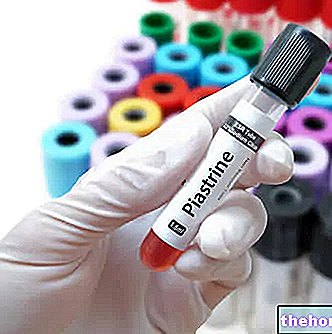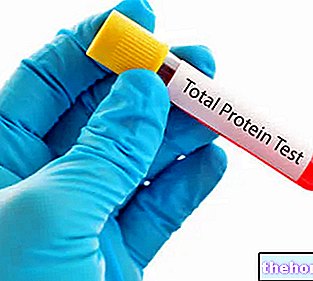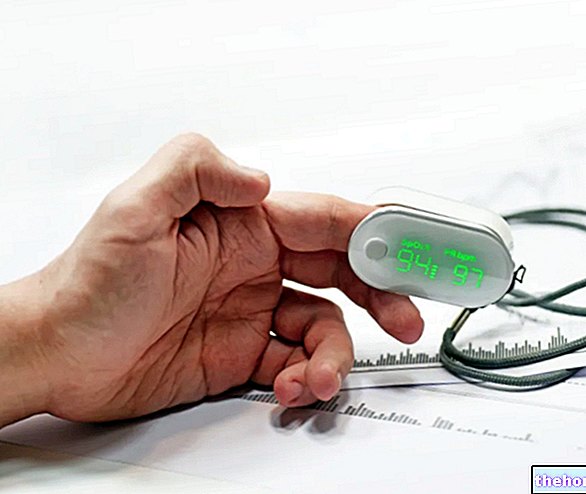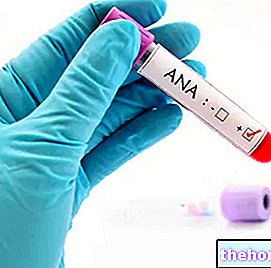Thrombocytosis - also known as platelets or thrombocythemia - is a condition characterized by the "increase in the number of platelets (or thrombocytes) beyond the maximum normal threshold. The quantitative excess of platelets materializes for values exceeding 400,000 thrombocytes per mm3 of blood," although the upper limit of normal may vary from one laboratory to another.
Causes of thrombocytosis
See also: Thrombocytosis - Causes and Symptoms
On the basis of their origin and pathogenesis, thrombocytosis is classified into two broad categories: primary and secondary platelet diseases. In some textbooks, the term thrombocytosis is reserved for secondary platelet diseases, while the term thrombocythemia (or plateletmia) identifies the primary forms.
SECONDARY OR REACTIVE THROMBOCYTOSIS
The increase in platelets is secondary to underlying pathological conditions, which determine a stimulus to the synthesis of thrombocytes in the bone marrow (medullary megakaryocytopoiesis). This results in the reversibility of secondary thrombocytosis if the underlying primary pathology resolves spontaneously or through therapy.
A particular form of secondary platelet disease is PHYSIOLOGICAL THROMBOCYTOSIS, a condition in which the platelet count rises above the reference value in response to a sudden release of the same from the spleen and lungs (normally 70% of platelets are circulating, while the 30% is found in the spleen). This event follows the increased secretion of adrenaline and is also common during intense exertion. Physiological thrombocytosis, as well as other conditions or pathologies accumulated by a transient increase in platelets, is not associated with clinical symptoms of any kind.
The term reactive is used to indicate the compensatory stimulus to the synthesis of new platelets induced by the increased loss, destruction or use of the same, common to many of the pathologies responsible for secondary plateletosis.
Secondary thrombocytosis can be classified into acute and transient or chronic, depending on the duration of the condition:
Acute or transient thrombocytosis
A) Duration from a few minutes to one hourB) lasting a few hours or a few days
- injection of adrenaline (epinephrine)
- strenuous exercise, severe fright, acute stress
- acute bleeding or hemolysis
- hypoxic conditions (oxygen deficiency)
- tissue necrosis
- post-operative, postpartum
- Post-thrombocytopenia: platelet deficiency → rebound thrombocytosis:
- immune reactions
- infections
- cyto-reductive chemotherapy
- megaloblastic anemia
- alcohol suspension
- therapy of deficient states of vitamin B12 and folic acid
- discontinuation of myelotoxic drugs
- Neonatal, with maternal drug abuse
Chronic thrombocytosis
- Chronic blood loss with iron deficiency
- Iron deficiency anemia
- Chronic inflammatory diseases (including intestinal diseases: Crohn's and ulcerative colitis)
- Chronic infectious diseases
- Neoplasms, such as those of the lung or kidney
- Chronic hemolytic anemias
- Asplenia, hyposplenia and splenectomy (functional insufficiency of the spleen or its surgical removal)
In outpatient practice, the most frequent cause of "moderate" thrombocytosis is represented by "iron deficiency anemia
PRIMITIVE THROMBOCYTOSIS
the cause of the elevated platelet levels is inherent in the bone marrow, where there is a neoplastic or dysplastic myeloproliferative disorder. There is therefore an increase in medullary platelet formation, the causes of which are listed below. inducing diseases, such that even by treating possible causes of probable induction (for example infectious processes) the high number of platelets remains.
Clonal haematological diseases associated with thrombocytosis
A) Myeloproliferative diseases
- Essential thrombocythemia (Essential or primary thrombcoytosis)
- Polycythemia Vera
- Chronic Myeloid Leukemia
- Primary idiopathic myelofibrosis
B) Myelodysplastic diseases
- Acquired idiopathic sideroblastic anemia
Risks for the Patient and Treatments
The transient reactive thrombocytosis is not accompanied by the increased risk of thrombosis, which instead becomes concrete in the chronic forms. Due to the high number of circulating platelets, one can in fact witness an increase in their aggregability, and the consequent coagulation phenomena of the blood which result in an increased risk of thrombosis - especially venous - and painful priapism. In the case of primary thrombocytosis there is an increased risk of both thrombosis and haemorrhage (apparently paradoxical phenomenon, explained on the basis of functional alterations of the thrombocytes) .
In the case of secondary thrombocytosis, in most cases, by resolving the triggering cause, the platelet count also slowly returns to the normal range. Conversely, in the case of primary thrombocytosis it is necessary to resort to cytotoxic / chemotherapeutic drugs (such as hydroxyurea) or anagrelide, in order to reduce the synthesis of platelets in the medullary. reinfusion of plasma. Low doses of aspirin, to be taken daily, may reduce the risk of heart attack or thrombosis associated with severe thrombocytosis (> 1,000,000 thrombocytes per mm3) or associated with other prothrombotic clinical conditions (eg neoplastic diseases, fixed assets in bed).




























